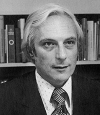Daniel W. Falconer, the American Concrete Institute's managing director of engineering, died on July 29 in Hartland, Mich., after a 16-month battle with colon cancer. He was 59 years old.
Falconer had been with the model-code-writing body since 1998. He was the secretary for the group's technical activities committee and the staff liaison to the committee developing "ACI 318-14: Building Code Requirements for Structural Concrete." He also represented ACI’s interests within the code, standards and specifications writing activities of numerous concrete-related groups. Falconer was named a Fellow of ACI in 2002.
The 2014 update of the 519-page ACI 318-14 was released last fall. The reorganized and reformatted standard, designed to be simpler and more intuitive for users, represented the first major overhaul since 1969. About 200 expert volunteers, who logged in more than 150,000 hours of work over six years, reorganized the code to provide a more designer-friendly format, generally based on concrete members, not behaviors.
There were many debates during the code's development period. "Dan was very good at smoothing the path to get things done," says Randall W. Poston, founder of Pivot Engineers and the ACI 318-14 committee chairman.
As a liaison to ACE, not as an ACI 318 committee member, Falconer attended steering committee meetings. "He helped us set the path early on," when there was discussion about how to revamp the code, says Poston. "He was not bashful about saying what was important, both as the liaison to ACI and as a practicing engineer."
An American Concrete Institute member since 1982, Dan served on ACI Committee 344, Circular Prestressed Concrete Structures, and on ACI Committee 373, Circular Concrete Structures Prestressed With Circumferential Tendons. He was also a member of the American Society of Civil Engineers.
Prior to ACI, Falconer held several engineering and marketing positions with VSL Corp., which specializes in construction engineering and associated technologies. Before that, he was a project engineer in the Washington, D.C., office of Skidmore, Owings and Merrill. He received his bachelor of science in civil engineering from the State University of New York at Buffalo and his master of science in civil and structural engineering from Lehigh University. He was a licensed professional engineer in several states.





